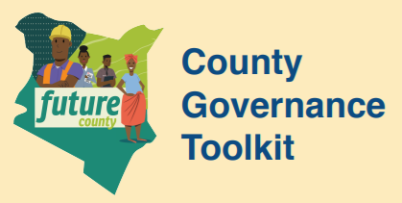Budgeting is the process of deciding how public resources will be allocated and moneys spent during the following fiscal year. Led by the County Treasury, it starts in July with the Budget Circular and culminates in June with the County Assembly approving the budget estimates and authorizing the Executive to spend.
| 1 |
Issued by the County Treasury in August, it regulates the yearly budget process (who does what, how and when)
|
4 |
The CBROP and sector reports frame the negotiations that produce the CFSP. This critical document defines the revenue and expenditure ceilings (budget allocations) for every department and program. Submitted to the CA by February 28th
|
| 2 |
As the annual implementation of the CIDP, the ADP defines what capital investments and projects will be funded the next fiscal year. It is submitted to the County Assembly (CA) by Sept 1st
|
5 |
Within the ceilings set in the CFSP, and guided by the ADP and progress reports, departments refine their development and recurrent budget estimates for consolidation and submission to the CA by April 30
|
| 3 |
The County Treasury reviews the spending and revenue collection of each department to assess the county fiscal space. It is submitted to the CA by Oct 21st
|
6 |
The technical committees of the CA review the budget estimates and the plenary discusses and approves the budget and appropriation bill before June 30th (end of fiscal year)
|
With County Finance and Economic Planning leadership, Departments and respective Sector Working Groups are involved throughout the year, from reporting on progress/spending to date, to prioritizing and costing investments for the Annual Development Plan (ADP), negotiating sector and program ceilings in the County Fiscal Strategy Paper (CFSP), and preparing detailed and realistic Budget Estimates.
The main task of the CA is to scrutinize and approve the documents tabled by the County Executive, including sector reports, ADP, CFSP, and Budget Estimates. While final questioning and approvals are made in plenary sessions, most of the preparatory work will take place along the year in the sector committees and in the finance and budget committee. The final key role of the Assembly is to appropriate funds giving to county departments the legal mandate to execute the approved budget.
The citizens’ role in budgeting is twofold: (a) providing inputs on emerging priorities, and (b) checking that previously agreed priorities are adequately funded in the approved budget. Key moments in the year is the preparation of the ADP in September – when the County approves investments/projects for the following year, the CFSP in February when budgeting ceilings are assigned to sectors and programs, and preparation of Budget Estimates in May-June when the final funding decisions are made
Other actors play important roles in the budgeting process:
- Sector Working Groups (SWGs) allow constant interaction between technical departments and sector stakeholders
- County Budget and Economic Forum (CBEF) facilitates high level discussions on the match between county’s socio-economic priorities and the county government budget allocations and fiscal policies
- County Commissioner and National Government agencies promote a well-functioning, two-way dialogue and coordination
- Controller of Budget (COB) to allow smooth legality checks and flow of intergovernmental transfers
- National Parliament approves the annual allocation of intergovernmental transfers based on recommendations from the Commission on Revenue Allocation
